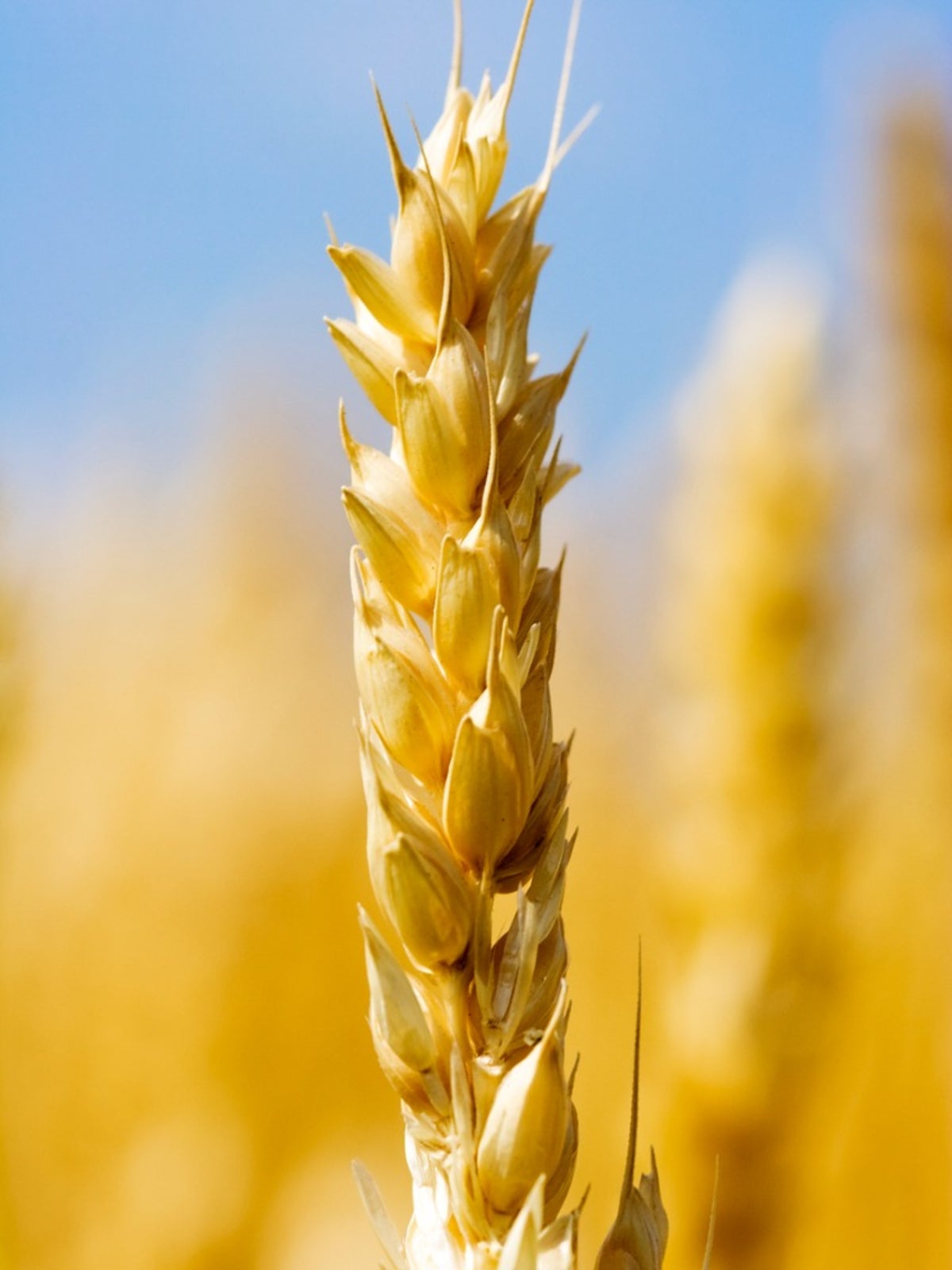
You want to eat healthfully and incorporate more grains into your diet. What better way than growing wheat in your home garden? Wait, really? Can I grow wheat at home? Sure, and you don’t need a tractor, grain drill, combine, or even the acreage that full scale wheat farmers require. The following wheat growing information will help you learn how to grow wheat in a home garden and caring for backyard wheat grain.
Can I Grow Wheat at Home?
It is very possible to grow your own wheat. It seems like a daunting task given the specialized equipment and large farms that commercial wheat farmers utilize, but the fact is that there are a couple of fallacies regarding growing wheat yourself that have turned even the most die-hard gardener from the idea. First off, most of us think you would need acres and acres to produce even a little bit of flour. Not so. An average backyard of say, 1,000 square feet (93 sq. m.), is enough space to grow a bushel of wheat. What does a bushel equal? A bushel is about 60 pounds (27 kg.) of grain, enough to bake 90 loaves of bread! Since you probably don’t need 90 loaves of bread, devoting just a row or two to growing wheat in the home garden is sufficient. Secondly, you might think you need special equipment but, traditionally, wheat and other grains were harvested with a scythe, a low-tech and low cost tool. You can also use pruning shears or a hedge trimmer to harvest the wheat. Threshing or removing the grain from the seed heads just means you beat it with a stick and winnowing or removing the chaff can be done with a household fan. To mill the grains into flour, all you need is a good blender.
How to Grow Wheat in a Home Garden
Depending on the planting season, choose from winter or spring wheat varieties. Hard red wheat cultivars are the most common used for baking and are available in both warm and cool season varieties.
- Winter wheat is planted in the fall and grows until early winter and then goes dormant. Spring’s warm temps stimulate new growth and seed heads are formed in about two months.
- Spring wheat is planted in the spring and ripens in mid to late summer. It can stand drier weather than winter wheat but doesn’t tend to yield as highly.
Once you’ve chosen the variety of wheat you wish to grow, the rest is fairly simple. Wheat prefers a neutral soil of about 6.4 pH. First, till the soil to a depth of 6 inches (15 cm.) in a sunny area of the garden. If your soil is lacking, amend a couple of inches (5 cm.) of compost in as you till. Next, broadcast the seeds by hand or with a crank seeder. Rake the soil to work the seed into the top 2 inches (5 cm.) of soil. To aid in moisture conservation and help control weeds, follow up with a 2 to 4 inch (5-10 cm.) layer of loose straw mulch spread out over the wheat plot.
Caring for Backyard Wheat Grain
Keep the area moist to encourage germination. Fall plantings will be less likely to need additional water, but spring plantings will need an inch (2.5 cm.) of water per week. Water whenever the top inch (2.5 cm.) of soil is dry. Warm season wheat may mature in as little as 30 days while those crops that are overwintered may not be ready for harvest for up to nine months. Once the grains are going from green to brown, cut the stalks to just above the ground. Tie the cut stalks together with twine and allow them to dry for two weeks or so in a dry area. Once the grain has dried, spread a tarp or sheet on the floor and beat the stalks with a wooden implement of your choice. The goal is to release the grain from the seed heads, which is called threshing. Collect the threshed grain and place in a bowl or bucket. Point the fan (on medium speed) to allow it to blow the chaff (the papery covering around the grain) from the grain. The chaff is a lot lighter so it should fly from the grain easily. Store the winnowed grain in a sealed container in a cool dark area until ready to mill it with a heavy duty blender or countertop grain mill.
Sign up for the Gardening Know How newsletter today and receive a free copy of our e-book "How to Grow Delicious Tomatoes".

Amy Grant has been gardening for 30 years and writing for 15. A professional chef and caterer, Amy's area of expertise is culinary gardening.
